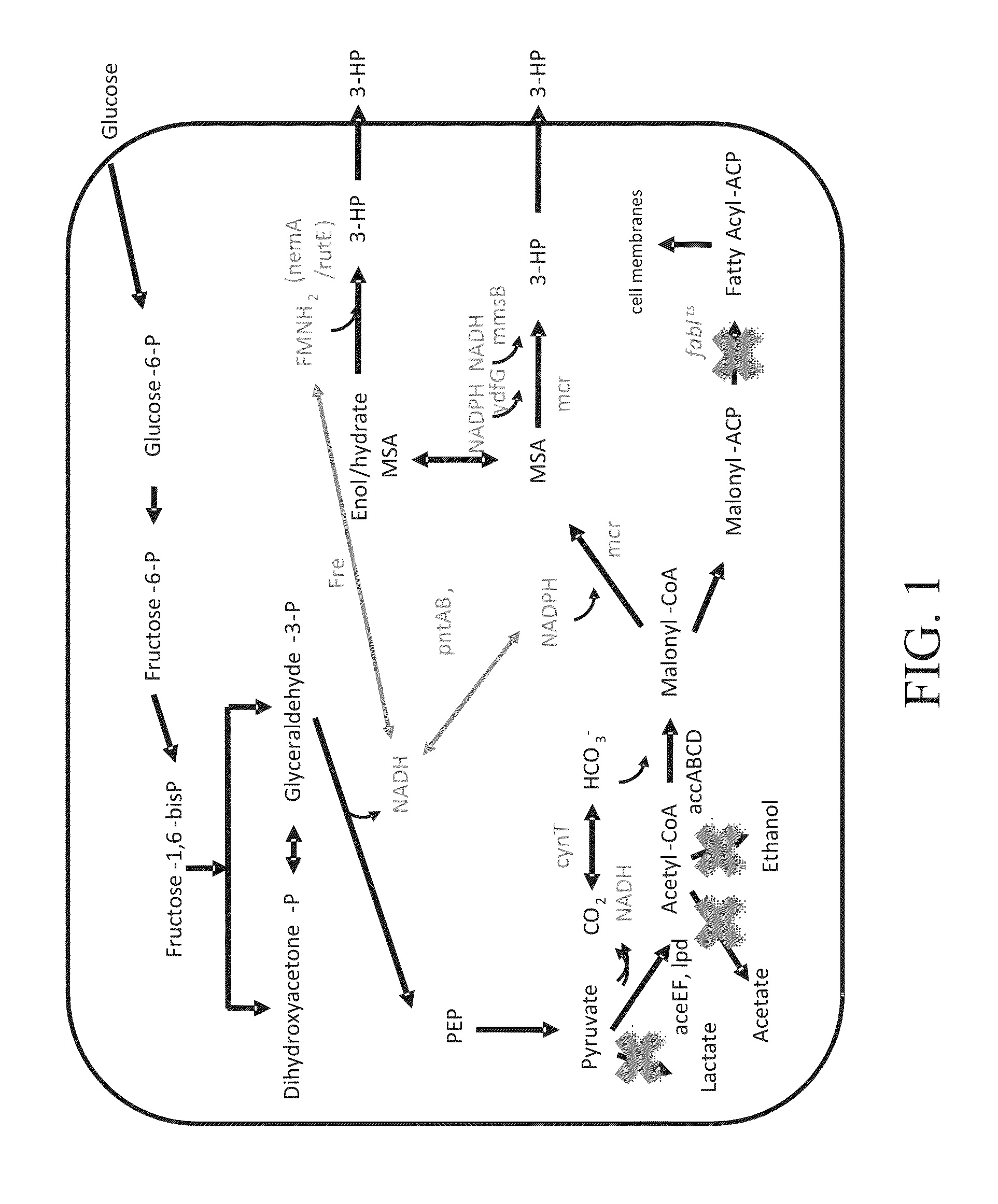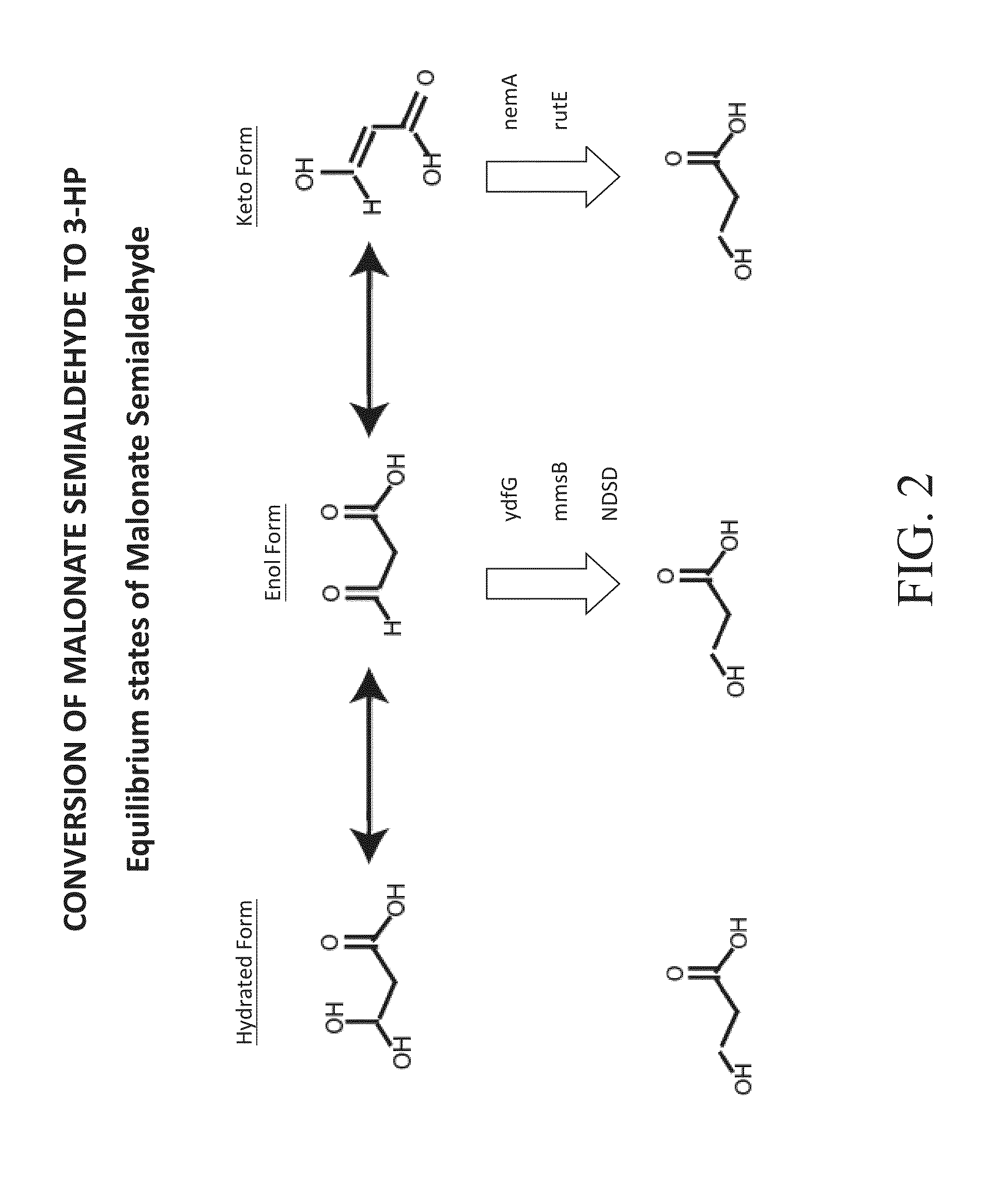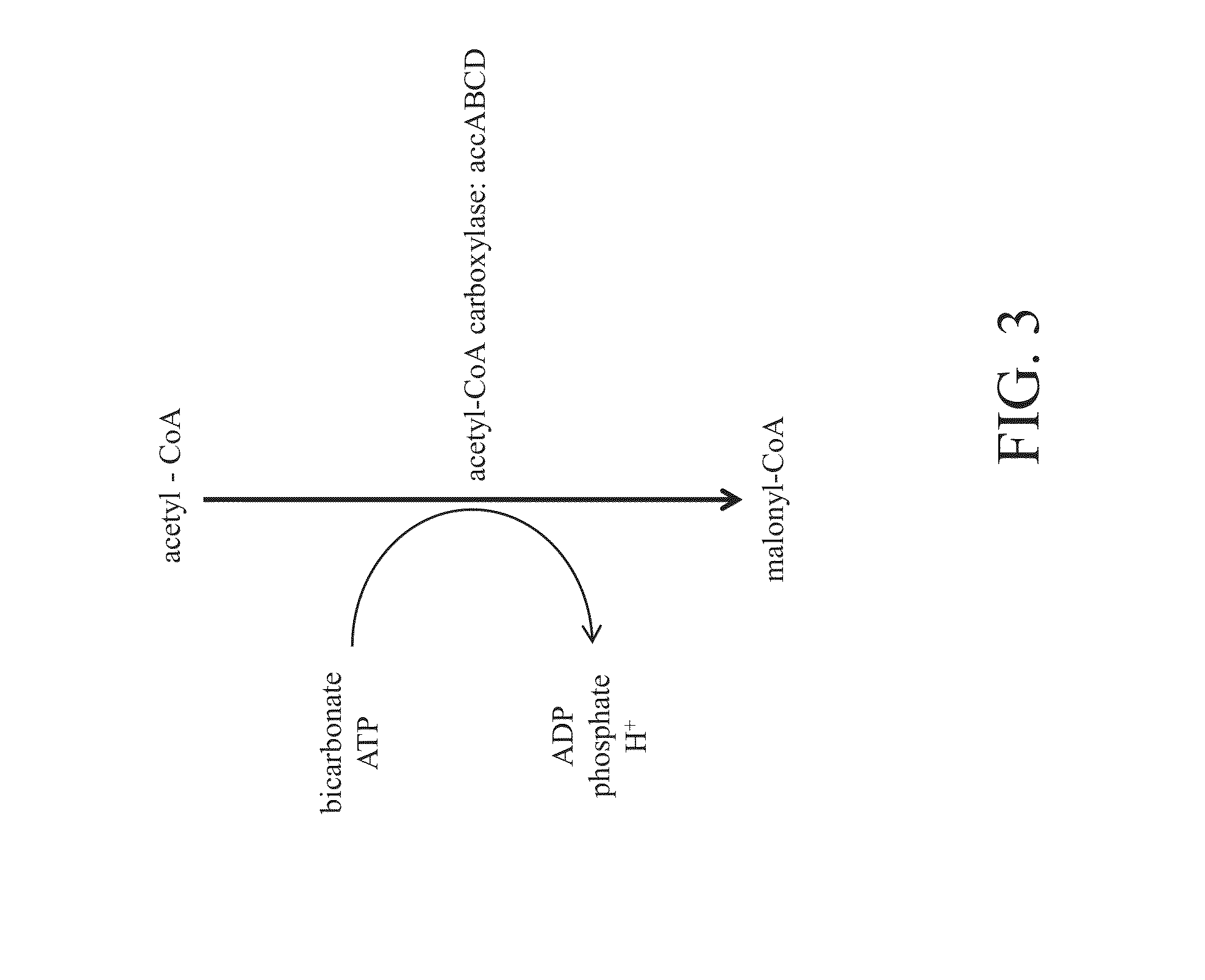Bioproduction of chemicals
- Summary
- Abstract
- Description
- Claims
- Application Information
AI Technical Summary
Benefits of technology
Problems solved by technology
Method used
Image
Examples
example 1
Salt Inhibition Studies in E. coli
[0206]The activity of ACCase complex, a critical enzyme in the conversion of acetyl-CoA to malonyl-CoA, the immediate precursor for 3-HP, is severely inhibited by salt. Dose-dependent effects on ACCase activity was observed in the presence of NaCl, NH4Cl, Na-3-HP, or NH4-3-HP such that salt levels near 0.44M resulted in decreasing the activity of the ACCase enzyme by approximately 80%, while salts of 3-HP levels near 0.66M decreased the activity of the ACCase enzyme by approximately 80% relative to control (FIG. 4). Levels of greater than 0.66M (60 g / L) are expected to be present for commercially viable commercial production of 3-HP.
example 2
ACCase from Halophilic Organism
[0207]Halophilic organisms, such as Halomonas elongata, are found in environments with high salt concentrations and, in general, have a salt internal concentration >2.5-3M. It is hypothesized that enzymes derived from any salt-tolerant species should be more resistant to enzyme inhibition by salts, such as 3-HP. Further, these enzymes that have greater salt tolerance should in turn have extended production under high salt conditions than enzymes with lower salt tolerance.
[0208]Accordingly, the genes encoding the accA, accB, accC, accD of H. elongata described in Table 1 were synthesized for expression in E. coli using codons optimized for this organism and supplied individually on pUC57 plasmids without promoters. Synthetic operons comprising the subunits were assembled using the Gibson assembly method.
TABLE 1Accession numbers for genes encoding ACCase subunitsfrom Halomonas elongataGeneAccession numberSEQ ID NO.accAYP_003898857.1SEQ ID NO. 1, 2accBYP_...
example 3
RBS-Optimized Genes
[0209]Enzyme expression is regulated at transcriptional and translational levels in prokaryotes. Ribosome Binding Sites (RBS) are 15 nucleotide segments which are known to control the level of protein expression in microorganisms. To enhance H. elongata ACCase expression various customized RBS were constructed and optimized for E. coli translation expression. Table 2 shows the RBS sequences used to increase expression of the individual subunits.
TABLE 2Table 2. RBS sequences used to enhance expression ofH. elongate ACCase subunits.ACCexpressionModified RBS sequences preceeding ATG (underlined)plasmidHe_accDHe_accAHe_accCHe_accBParent 2-45′-5′-5′-5′-GCGTAGTAAAGGACAATTTATTTAAGGAGAAATTTCATACCGGAAGAACAAGGGGGTAACATATGGGACTCTTAAGATGACAGGCGAAGGAGGTGTACATGGAAAAACCATGB2Same as 2-4Same as 2-4Same as 2-45′-ggaagaattaagggggacaagggggaataATG13A5′-Same as 2-4Same as 2-4gcgtagtagccgggtgataaggagccgtaacATG14C5′-Same as 2-4Same as 2-4Same as 2-4gcgtagtagctgatataaaaggaggtaacggATG15CSa...
PUM
| Property | Measurement | Unit |
|---|---|---|
| Temperature | aaaaa | aaaaa |
| Temperature | aaaaa | aaaaa |
| Temperature | aaaaa | aaaaa |
Abstract
Description
Claims
Application Information
 Login to View More
Login to View More - R&D
- Intellectual Property
- Life Sciences
- Materials
- Tech Scout
- Unparalleled Data Quality
- Higher Quality Content
- 60% Fewer Hallucinations
Browse by: Latest US Patents, China's latest patents, Technical Efficacy Thesaurus, Application Domain, Technology Topic, Popular Technical Reports.
© 2025 PatSnap. All rights reserved.Legal|Privacy policy|Modern Slavery Act Transparency Statement|Sitemap|About US| Contact US: help@patsnap.com



